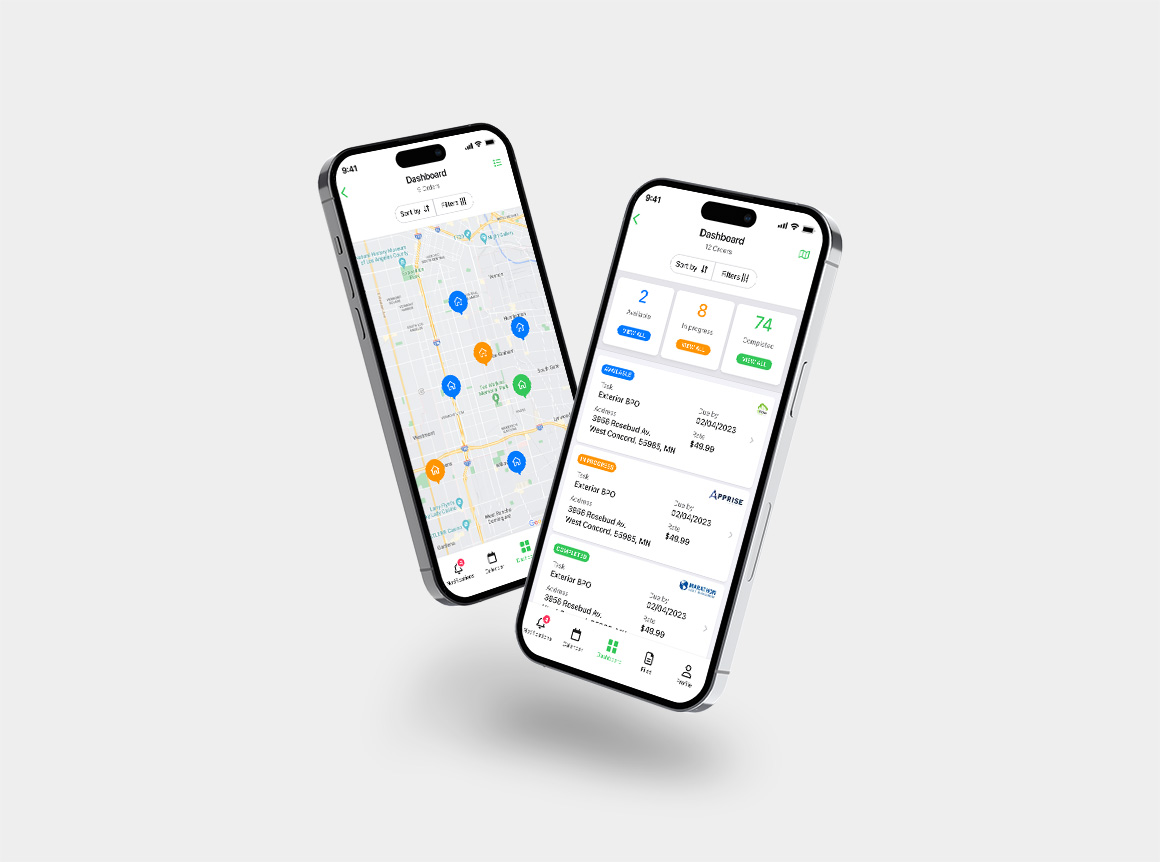iOS app designed to streamline home appraisals and property value estimation.
Whether users are homeowners seeking insights or real estate professionals requiring quick assessments, this app offers a comprehensive solution.
MY ROLE
UX/UI Designer, Research, Ideation, Wireframes, Low Fidelity design, High Fidelity Design, Prototyping, Usability Testing.
Collaborated with the in-house design team, User Research and internal stakeholders.
PROBLEM STATEMENT
In the home appraisal industry, both professional appraisers and homeowners face significant challenges. Professional appraisers are overwhelmed with time-consuming processes, outdated technology, and complex regulatory requirements. On the other hand, homeowners looking to self-appraise their properties for selling or mortgage applications lack the tools and knowledge to perform accurate and reliable appraisals. These issues lead to inefficiencies, inaccuracies, and frustration for both groups, with the current app failing to provide a comprehensive solution for the above problems.
GOALS
The primary goal of the home appraisal mobile app is to provide an efficient, user-friendly solution tailored to the needs of both professional appraisers and homeowners. The app aims to streamline the appraisal process, improve accuracy, and enhance the overall user experience.
Specifically, the app should:
For Professional Appraisers:
-
- Integrate data collection, management, and reporting into a single platform.
- Provide mobile capabilities for on-site data entry and syncing.
- Automate report generation and ensure compliance with the latest regulations.
- Facilitate easy access to up-to-date market data and trends.
- Improve client communication and management.
For Homeowners:
-
- Offer step-by-step guidance for self-appraisal.
- Include intuitive tools for capturing property details and uploading images.
- Provide educational resources to help users understand the appraisal process.
- Deliver a preliminary valuation report that can be used for selling or mortgage applications.
- Enable seamless sharing of appraisal results with real estate agents or lenders.
DISCOVERY & ANALYSIS
Stakeholder Meetings:
-
- Objective: Assess stakeholder expectations and gather insights on the current challenges faced by professional appraisers and homeowners.
- Outcome: Identified key pain points such as inefficiency in data collection and report generation for appraisers, and lack of guidance and reliable tools for homeowners.
Analysis of Previous User Tests and Feedback:
-
- Objective: Review data from past user tests and feedback on the current appraisal processes and tools.
- Outcome: Highlighted areas needing improvement, such as outdated technology, poor integration of tools, and user frustrations with manual data entry and report formatting.
User Surveys:
-
- Objective: Conduct surveys with current users (both professional appraisers and homeowners) to understand their needs, preferences, and pain points.
- Outcome: Gathered valuable insights into user behavior, specific challenges faced during appraisals, and features desired in a new app.
Old version of the app
DESIGN APPROACH
Paper Wireframes
To begin the design process, we started with paper wireframes. This low-tech approach allowed for quick iterations and easy modifications based on immediate feedback. Key screens and user flows were sketched out for both professional appraisers and homeowners, focusing on the essential features and navigation paths.

Low-Fidelity Wireframes
After refining the paper wireframes, we moved to creating low-fidelity digital wireframes using Figma. These wireframes focused on the layout, structure, and basic interactions without detailed design elements. The goal was to ensure the functionality and user flow were intuitive and met the needs of both user groups.
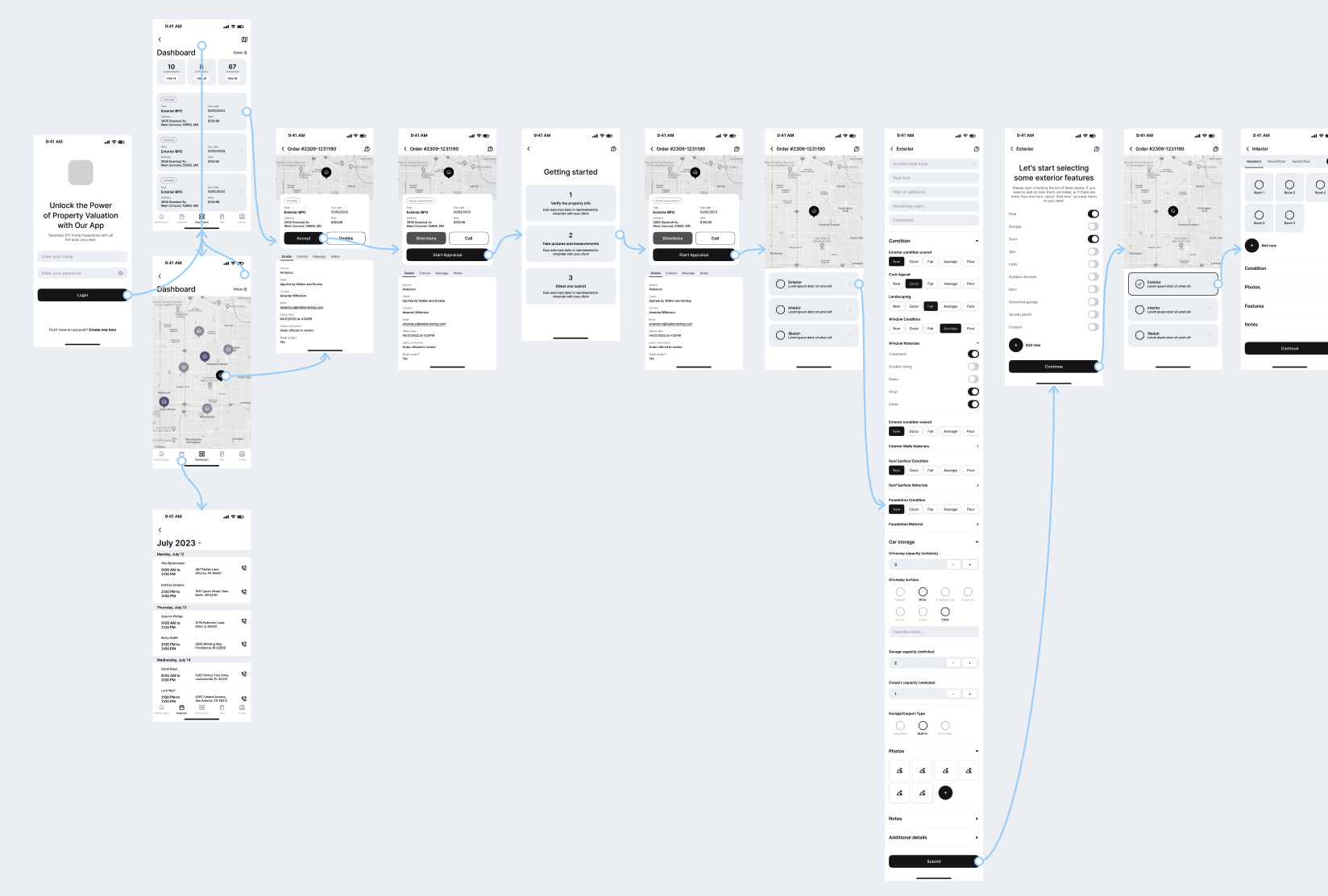
These basic prototypes were tested with 5 professional appraisers and 5 home owners, with different backgrounds and various technical skills. Furthermore, we have used AI tools to obtain more feedback.
After small iterations, we have moved to…
High Fidelity Flow and Designs
The current flow can be seen here
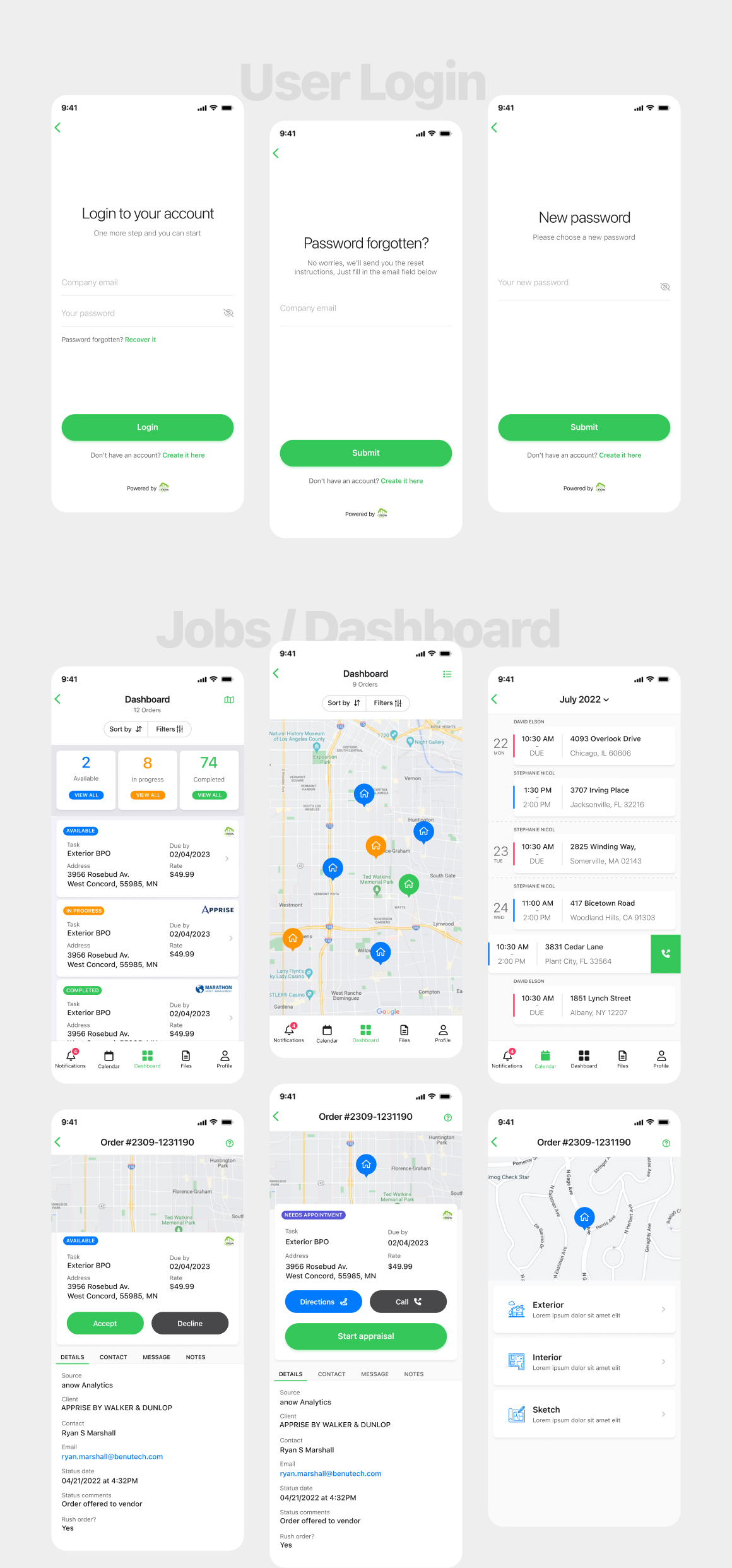
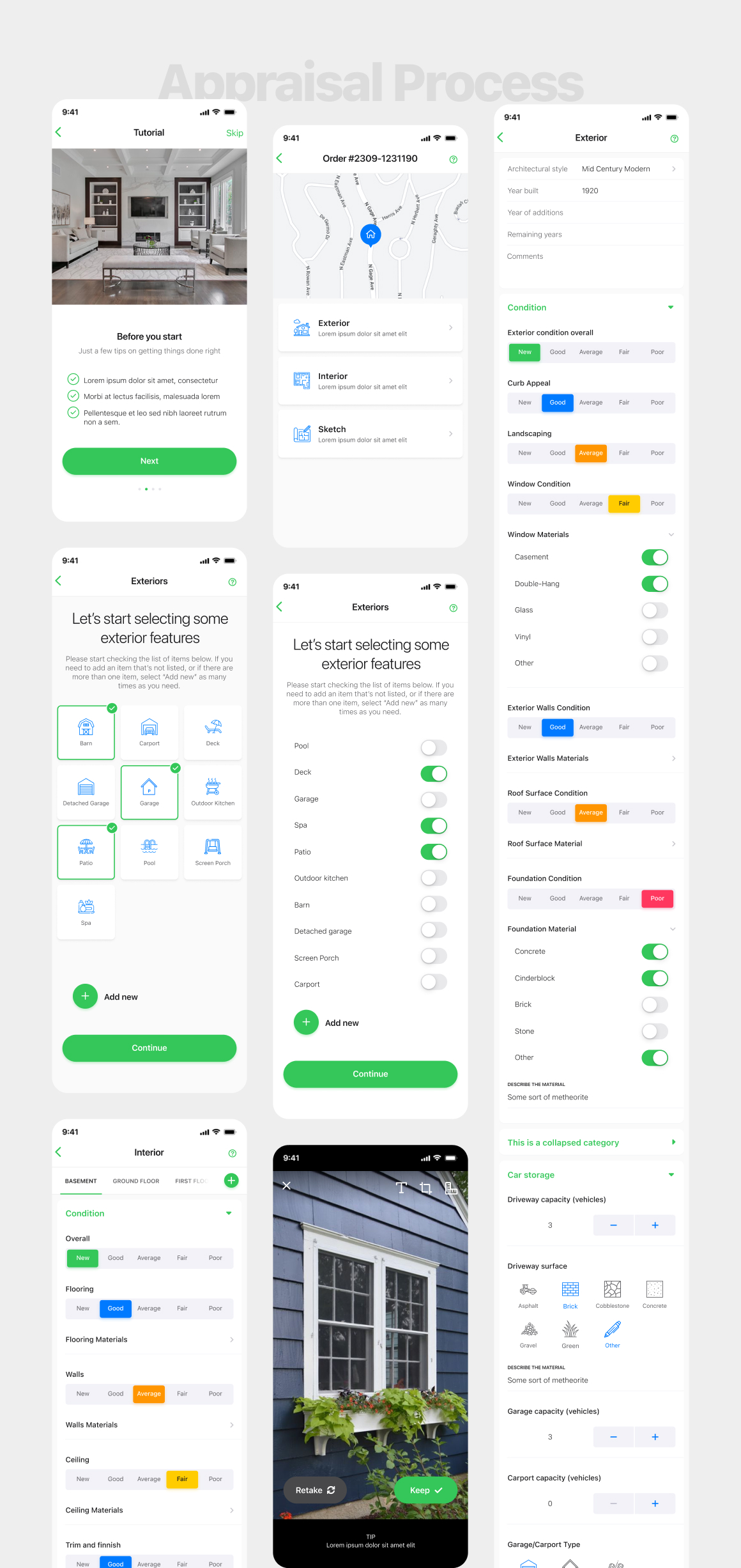
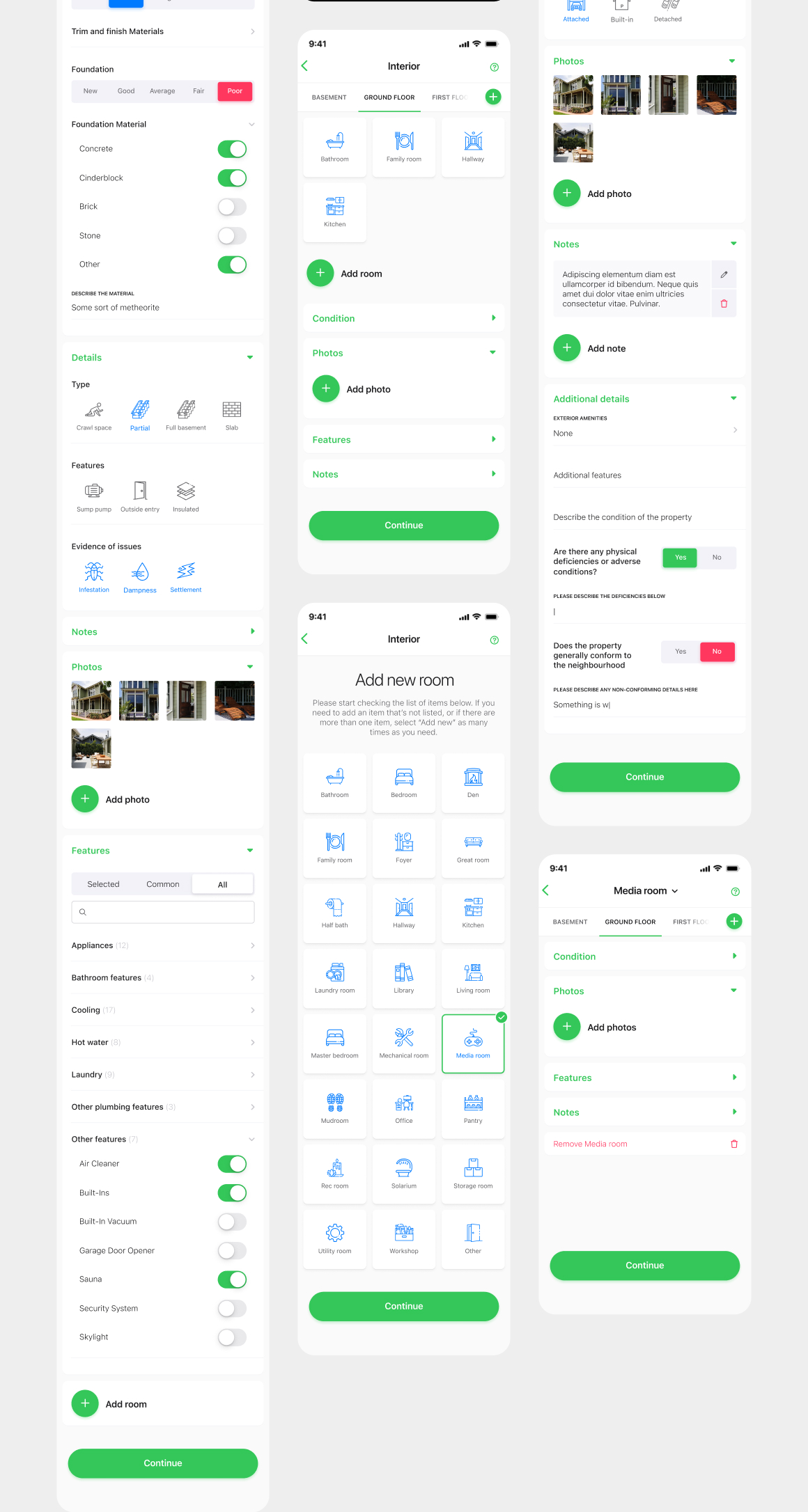
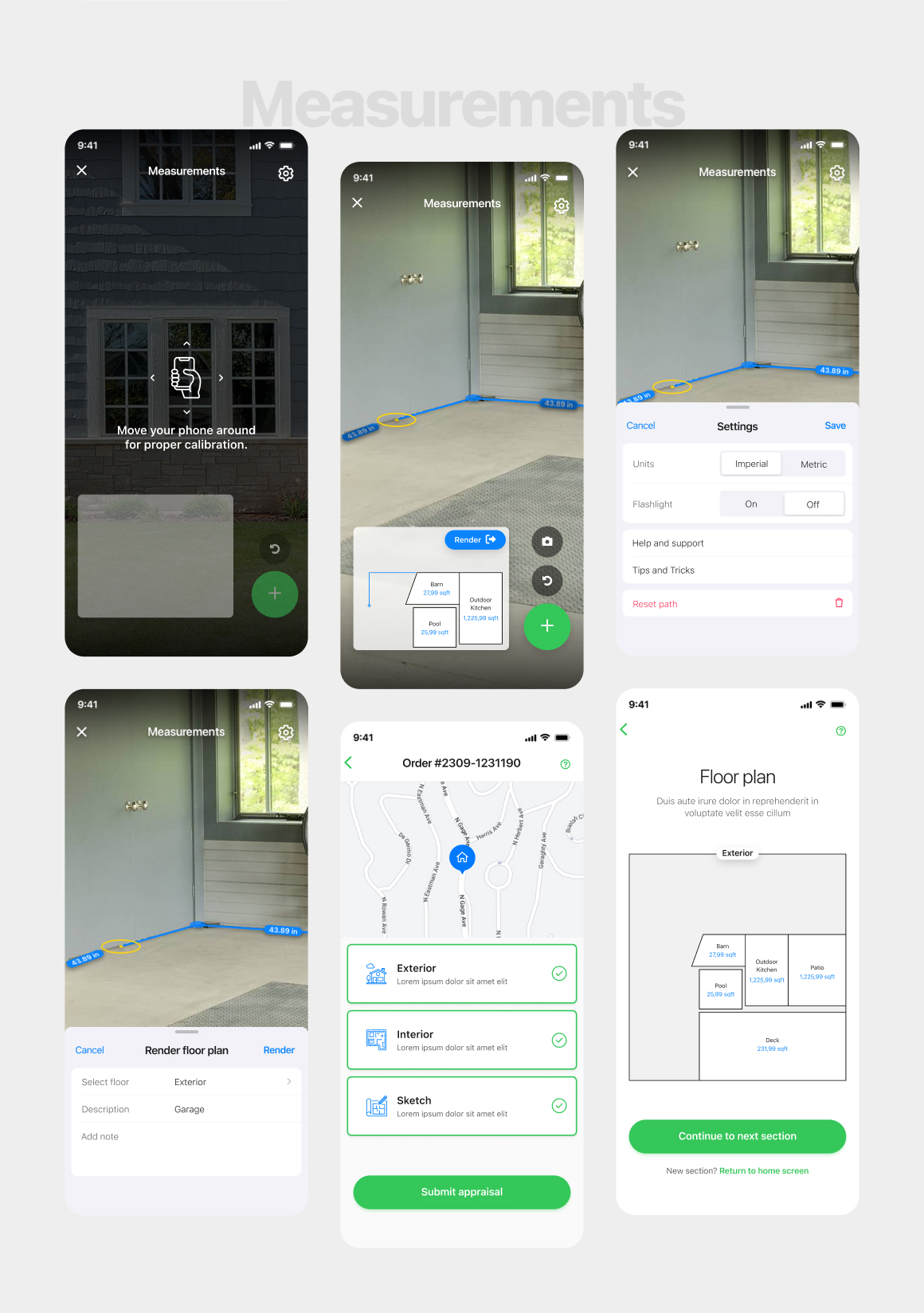
MEASURING SUCCESS
Shortly after the MVP (Minimum Viable Product) was ready, it was launched to a limited number of beta-testers. These testers included both professional appraisers and users of the old version of the app. The primary objective was to evaluate the app’s performance and impact on key metrics.
Increase in Appraisal Processes Concluded:
-
- Metric: Number of appraisal processes completed using the app.
- Outcome: The beta launch resulted in a 30% increase in appraisal processes concluded compared to the old app. This indicates improved efficiency and user satisfaction with the new app’s streamlined workflow.
Reduction in Back-and-Forth Communication:
-
- Metric: Number of back-and-forth messages and requests for updates between appraisers and clients.
- Outcome: There was a 40% reduction in back-and-forth messages and requests for updates. The integrated communication features and real-time updates in the new app reduced the need for constant follow-ups, saving time for both appraisers and clients.
Improved Report Quality:
-
- Metric: Quality of the appraisal reports, assessed through user feedback and compliance with industry standards.
- Outcome: The quality of the reports was significantly better, with 25% more positive feedback from users. The automated report generation and compliance checks ensured that reports were accurate, detailed, and met regulatory standards.
CONCLUSION
The beta testing phase demonstrated the app’s success in achieving its primary goals:
- Efficiency: A notable increase in the number of completed appraisals showed that the app significantly improved the efficiency of the appraisal process.
- Communication: A substantial reduction in back-and-forth messages highlighted the app’s effectiveness in enhancing communication and reducing unnecessary delays.
- Report Quality: Enhanced report quality confirmed that the app’s features for automated report generation and compliance checks were effective.
Overall, the app’s positive reception from beta-testers validated its design and functionality, indicating strong potential for broader market adoption.

